“Babel’s Tower – Wrapping History Around Ruins”
As a story teller, I have embarked on the journey of uncovering Berlin’s material and intangible, concrete and fictional narratives. Investigating the urban language, from the scale of the city, to the scales of the neighbourhood, the street, the building, the room, the brick, I have pursued the notion of texture, seen as a conveyor of memory and history.
By analysing Berlin’s plans, I have interpreted them as a piece of urban writing, composed in distinct urban languages that, at times, overlap, were erased or written over. Each of the languages is constructed through the elements of morphology and syntax. On one hand, individual entities such as buildings, streets, places are subjects of urban morphology, while their juxtaposition is a matter for the urban syntax. On the other hand, any language presents an abstract, intangible side, its ‘spirit’.
The complexity of Berlin’s textures is mainly attributed to the presence of ‘the destructive character, that has intervened cyclically throughout time:
‘The destructive character knows only one watchword: make room. And only one activity: clearing away. His need for fresh air and open space is stronger than any hatred.’ -Walter Benjamin
he site is located at Jannowitzbrucke, a paragraph that has changed it’s text and voice continuously. Once a prosperous area with two theatres, it has been partially erased during the ‘Battle of Berlin’. Located in the near vicinity of Alexander Platz, the centre of GDR’s capital, it became the built manifest of a social, economic and politic ideology. Any buildings left were torn down and new sentences written in pre-fabricated concrete blocks, wide boulevards and large green areas, the socialist vision.
Three words in particular were inserted to be the subject of
the paragraph, three 18 storey tower blocks, a dominant of the intersection of Holzmarkt Strasse and Alexander Strasse. Now-a-days they are perceived as ruins, what was once a symbol of an identity, is now obsolete, a past subject.
By wrapping a new expressive structure around them, the proposal resurrects the paragraph’s forgotten languages and changes the meaning of the physical bodies present on the site. Expression is both a manifestation of Berlin’s expressionist past, a piece of history, and a tool used to engrave texture on the new urban symbol.
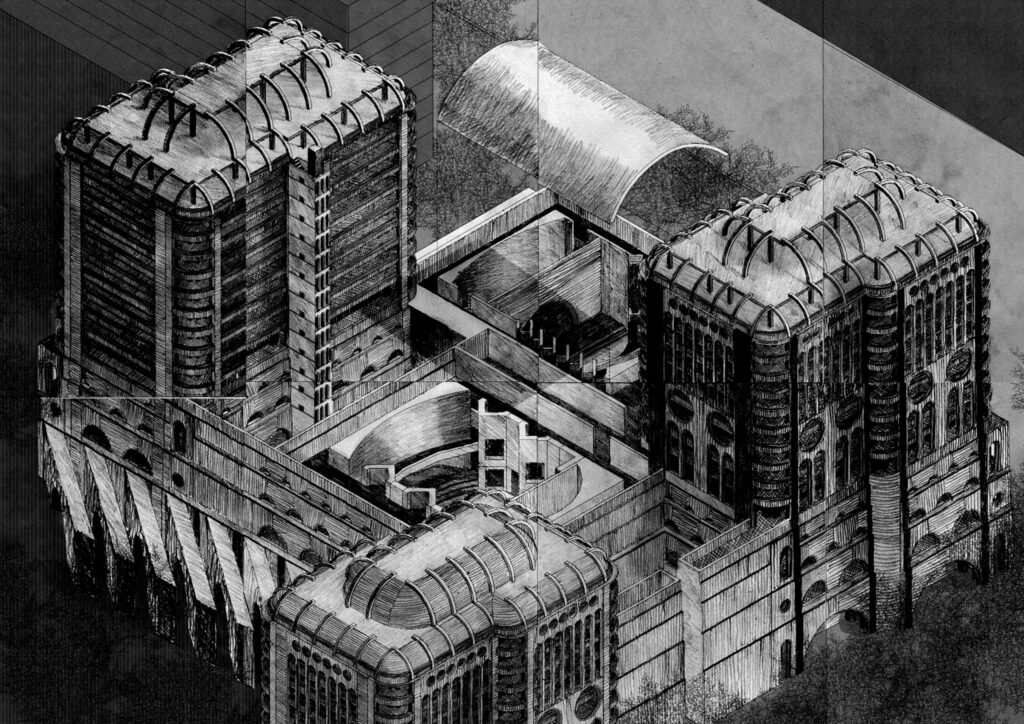
Axonometric Drawing of Proposal on Site
Babel’s Tower Unites the Negative Typologies Found, Directly, or Uncovered on Site
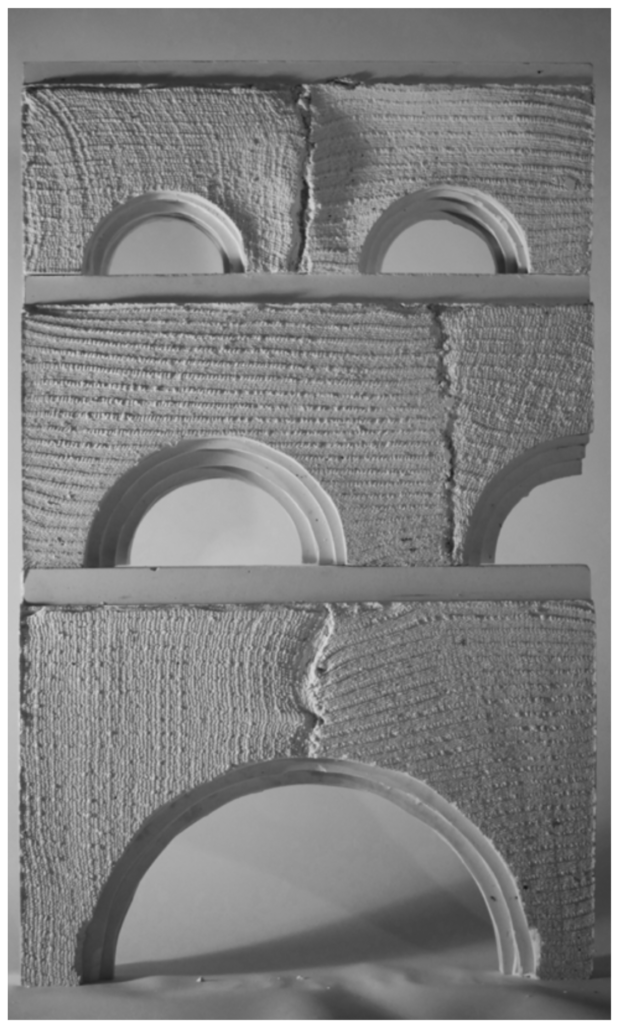
1:20 Facade Exploration Model
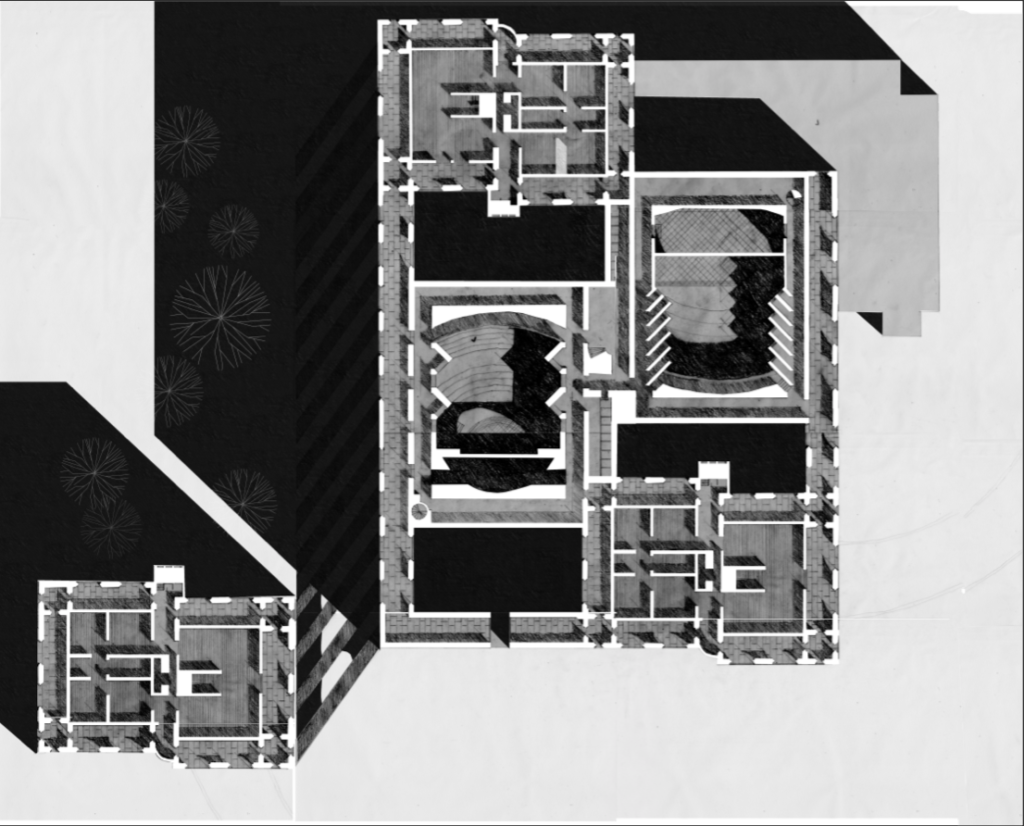
First Floor Plan
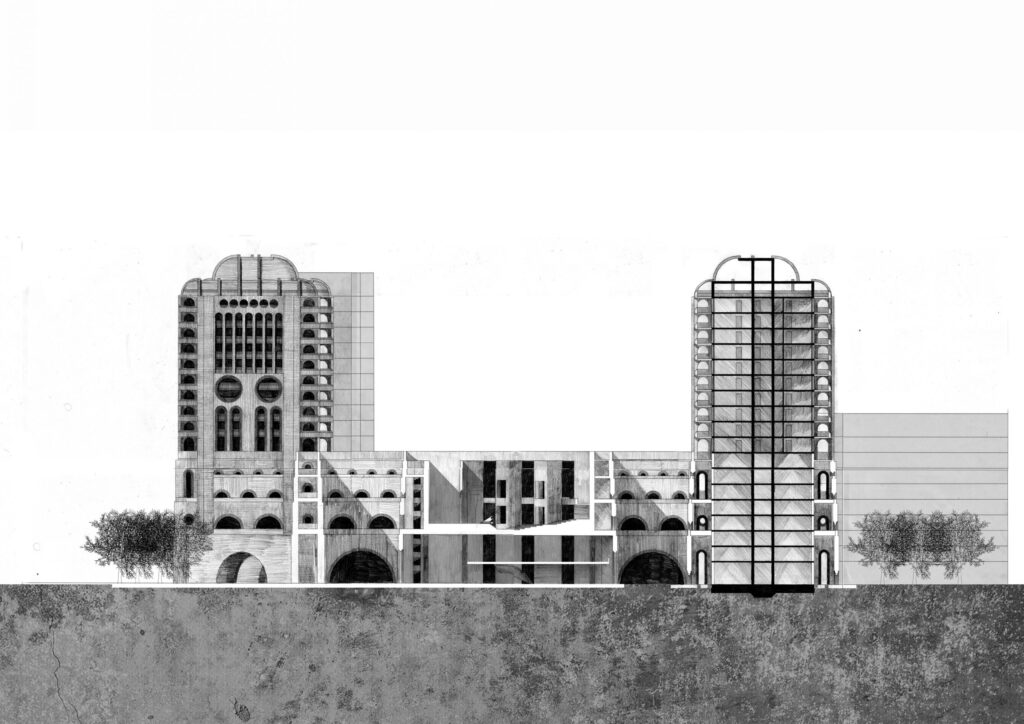
Section Through Site
In White Section Through New-Build Structure, In Black Existing Structure of Memory Tower
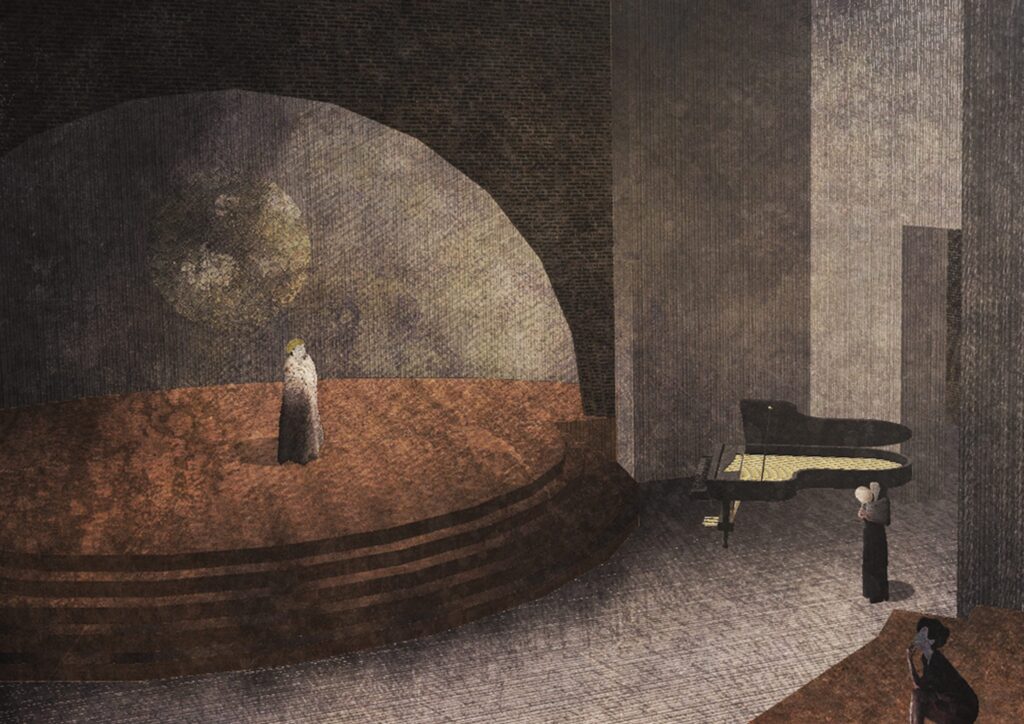
Amphitheatre View
Insertion of an Amphitheatre and a Theatre , Layout Determined by the Double Walling Wrapped around the Three Blocks
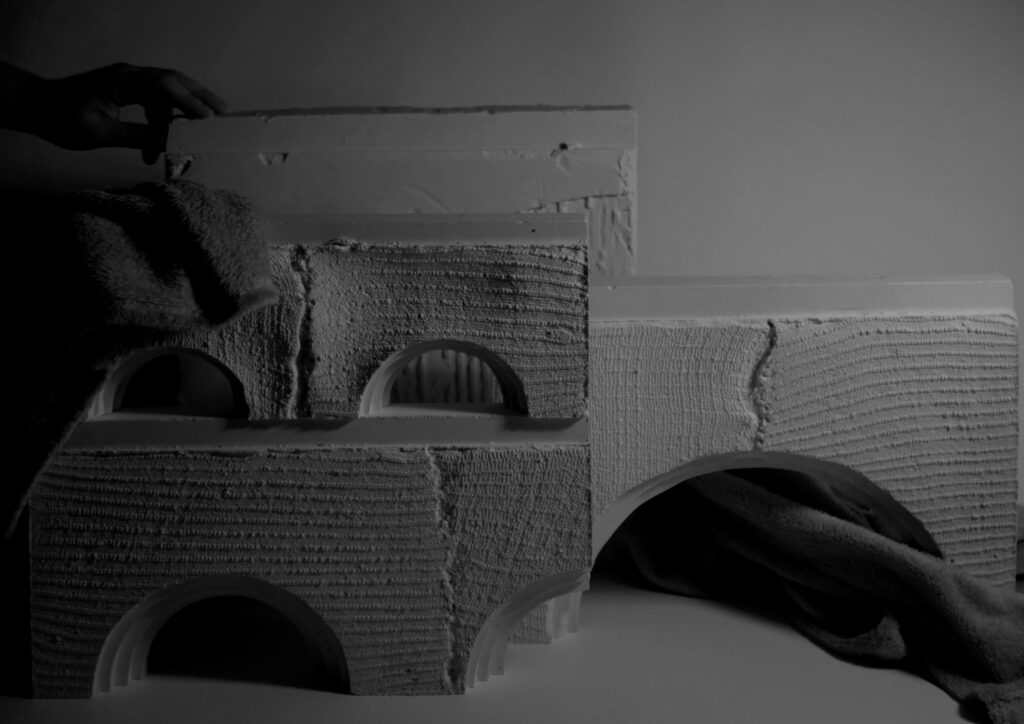
Facade Model Exploration
Plaster and Textile
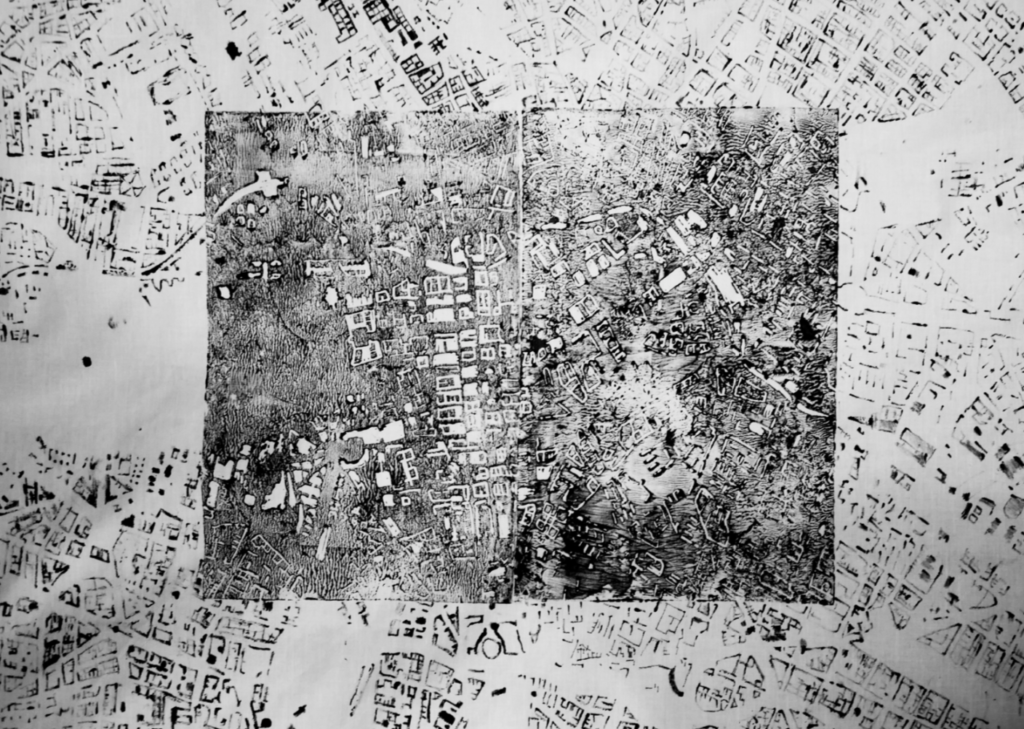
Languages of Berlin
CONTACT DETAIL: andreea.ciutac@gmail.com
Curated by Andreea-Ioana Ciutac
